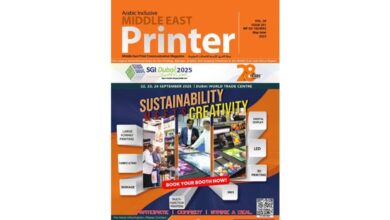Canon Europe Announce new Senior Executive

Canon Europe announced Taz Nakamasu, Executive Vice President Digital Printing & Solutions (DP&S) for Canon EMEA, has been appointed Global CEO Canon Production Printing (CPP). He replaces Mick Asada who will be returning to Tokyo to take on a new Canon Inc. headquarter assignment at the end of the year.
Mr Nakamasu has over four decades of experience with Canon where he has served in various senior leadership roles including Group Executive of OIP Small Office System Group, Canon Inc, Group Executive of Corporate Planning Development, Canon Inc, as well as President of Canon Australia.
For the past six years, Mr Nakamasu has held the position of Executive Vice President, Digital Printing & Solutions for EMEA where he has significantly contributed to the strategic direction and reformation of this business area and range of products, solutions and services. This included integrating the sales and marketing responsibility for Canon Production Printing’s portfolio into EMEA bringing the technology even closer to its customers. He will take on this new role based in Venlo, the Netherlands from January 1, 2023.
Commenting on the appointment, Taz Nakamasu said “I am very excited for the opportunity to lead Canon Production Printing at such a critical time. For the past four years, under Mick’s leadership, CPP has expanded its portfolio and has focused on new growth areas like Graphic Arts. I look forward to working with the team and continuing the business evolution.”
Hiro Imamura, currently Vice President Marketing & Innovation EMEA Digital Printing & Solutions, will be promoted to Executive Vice President DP&S, Canon EMEA. Mr Imamura brings nearly 40 years of collective experience in the printing industry and as well as previously working in Canon Inc. and Canon USA sales region. He will commence in this new role from January 2023. A successor will be announced shortly.





